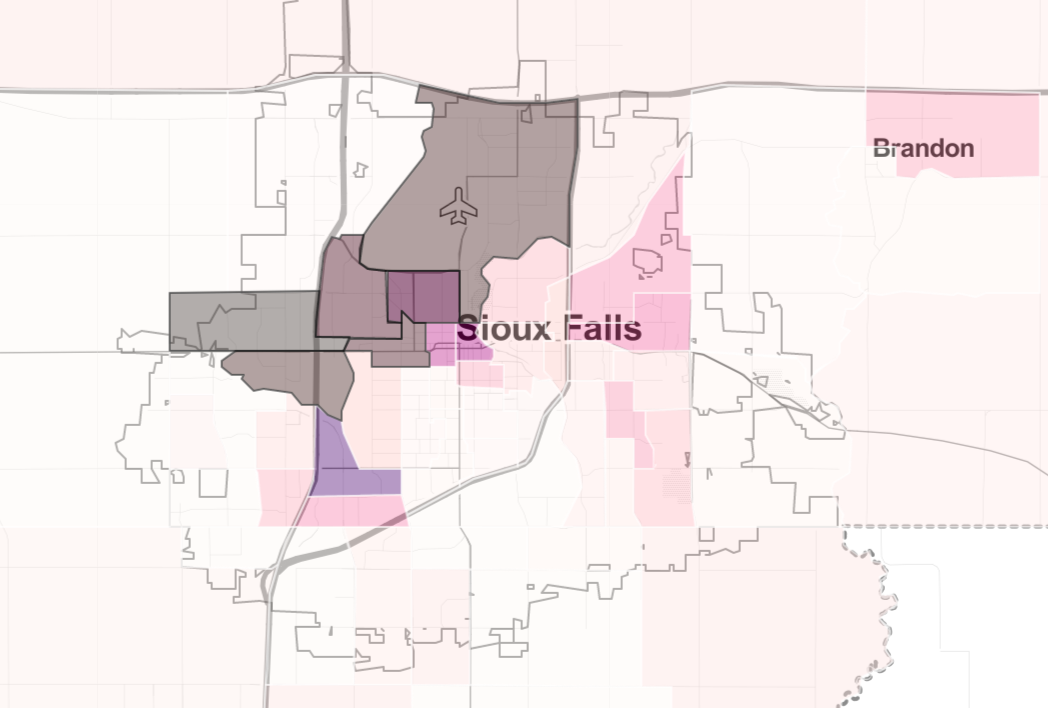Simplified: More kids are going hungry in Sioux Falls today than four years ago, according to newly released data from the Augustana Research Institute and Sioux Falls Thrive. The data also showed the persistence of food deserts that disproportionately affect low income residents and people of color.
Why it matters
- As many as 1 in every 6* kids in Minnehaha County are food insecure, meaning they don't have consistent access to enough food for a healthy, active life, per USDA definitions.
- A new study released Tuesday by Sioux Falls Thrive also showed that more than 24,000 people in the city live more than one mile from the nearest grocery store.
- The study also tracked the types of food available in food deserts compared to areas of town with closer access to supermarkets. Stores in food deserts were less likely to carry fresh or frozen fruit and vegetables.
"Yes, we are a generous, wonderful community, and it's a great place to raise kids," Thrive President Michelle Erpenbach said. "But we have children in this community who are hungry, and that's our reality."
*The actual number is 17 percent in the 2022 study, up from 13 percent in 2018.
What does the new data show?
Food insecurity is increasing, not just among children.
- Before the pandemic, about 9 percent of people in Minnehaha County and nearly 6 percent in Lincoln County were food insecure.
- Today, Feeding America estimates those numbers at 11 percent and 7.5 percent, respectively, per the study.
The study also shows that people who have lower incomes are more likely to live in a food desert. And food deserts disproportionately impact Hispanic, Latino, Black and Native American people.
The update to the study was prompted by changes in recent years brought on by the pandemic, inflation, supply chain issues, global conflicts and more, said Suzanne Smith, associate vice president for enterprise data analytics and the Augustana Research Institute.
And one of the takeaways should be noticing the disparities of food access across different neighborhoods in town, she said.
Who are the helpers here?
There are a number of hunger-focused nonprofit organizations working together through Sioux Falls Thrive to address this issue, Erpenbach said.
And different projects, such as the city's plan to give $400,000 to someone who comes up with a creative solution to get food to food deserts, are also looking to help, she added.
"But those are just pieces and parts of it," she said. "We've got to get to the point where people are working systemically with this, where everyone is working together."
Sioux Falls Thrive is also looking to bring some new faces onto its food security action team, which has studied this issue for years now.
How can I help?
Start with recognizing the problem. You can read the whole report here and see interactive maps here.
"If someone is lucky enough to live in a neighborhood where it’s easy to get to a grocery store … it’s easy to overlook the fact that for some people, they're walking more than half an hour one way to get a balanced meal on the table," Smith said.
Then go volunteer.
"Go help serve at The Banquet. Go fill backpacks at Feeding South Dakota," Erpenbach said.
It's also important to note the role transportation plays, Erpenbach said. Often people in food deserts who are most affected by the lack of food access are those who don't have a vehicle or a bus route to get them to a grocery store.
- The city is currently evaluating current bus routes. You can give feedback using the transit survey here.


